FREE SPARRING USING SHAOLIN SKILLS AND TECHNIQUES
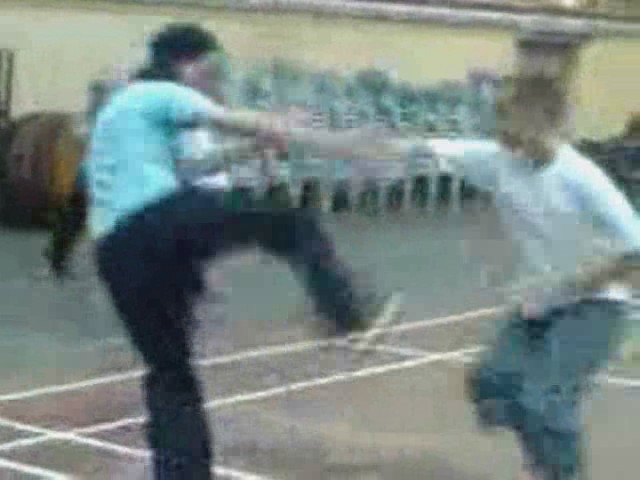
Using Kungfu in Free Sparring is Certainly Possible and Also Enjoyable
It is ironical that many kungfu practitioners today not only cannot use kungfu in free sparring, they even believe that it is not possible! If kungfu students who have practiced kungfu for many years cannot spar effectively, it is bad enough, but it may be excusable as they are still students. What is shocking is that some world known kungfu masters, whom the general public look up to as authority, cannot apply their kungfu for combat, and even have explicitly and publicly said that kungfu techniques cannot be used for sparring and fighting. It really sounds the alarm bell that if nothing drastic is done to arrest this situation, genuine traditional kungfu may be lost forever within the next two generations.
We in Shaolin Wahnam are dedicated to do our part to arrest this alarming situation. We are even ready to teach our sparring methodology to deserving kungfu practitioners, including masters, of other styles without their having to owe allegiance to our school. This was unthinkable in the past where sparring methods were kept strictly secret.
We are proud that everyone who has learnt kungfu, including Taijiquan of course, from us for longer than half a year can use kungfu for combat. This does not mean we are formidable fighters — we still will be beaten if our opponents are more combat efficient — but we can proudly say that we can use our kungfu to put up some reasonable defence. At the same time we realize that while practicing kungfu looses its meaning without its combat function, there are many other more worthwhile benefits from kungfu training besides being able to fight.
Participants at the Special Shaolin Kungfu Course of September 2005, some of whom are Shaolin Wahnam instructors and assistant instructors, underwent a programme to enhance both their internal force and combat efficiency. The video clips listed below show their free sparring, which was the climax of their combat training programme. As usual, these videos were taken impromptu, and are released without editing.
None of the movements shown in the video clips were pre-arranged. It is obvious that the participants could use kungfu techniques and combat sequences to spar spontaneously. They could do so because they had been systematically trained. If someone attempts to free spar without prior combat training, he will inevitably spar haphazardly like children.
What is less obvious is that the course participants also used kungfu skills and tactics. Less obvious still, although it is actually more important to us, is that the combatants were physically and mentally relaxed, and they were not tired or panting for breath despite having trained vigorous for a few hours. They felt peaceful and happy, and some of them even had glimpses of Cosmic Reality. In other words, their kungfu training, including the free sparring shown in these video clips, contribute to their good health, vitality and spiritual development.
We can anticipant that some may ask the following questions.
- Why are there no hits connected? Is this type of sparring effective for actual fighting?
- The strikes seem to lack power. Can such strikes be decisive in a real fight?
- Will the kungfu practitioners be able to use their techniques if their opponents attack them in non-kungfu manner?
- Why are the combatants so relaxed? Will they be effective in fighting?
The following explanation will be helpful.
- Kungfu combat application today is of such a low level generally that many martial artists are hit many times in free sparring. Some people even think that to be hit a few times in free sparring is a norm, a form of punishment they have to endure. This is ridiculous, though true today. The very fact of learning kungfu, or any martial art, is to avoid being hit. If you are skilful in sparring, you will not be hit even once. This type of training which enables you to be free from being hit, because you can defend against them, is certainly effective for actual fighting.
- The strikes are actually powerful, though they may not be rough or strenuous, because the combatants use internal force. This, in fact, is a mark of a superior art. An art that uses brute strength and muscular tension is comparatively inferior. Moreover, the combatants here can control their force. They can apply force at contact, without having to tense their muscles first and gather momentum to pick up force. Thirdly, the attacks here are aimed at vital spots. A single strike is often decisive in a real fight.
- At first a kungfu practitioner needs to get used to different ways of attacks from opponents fighting in a non-kungfu manner. Once he has accomplished this, he will find it so much easier to fight such opponents. The participants here as well as in other kungfu courses found out this fact from their direct experience during their courses themselves. The underlying reason is that kungfu techniques developed directly from the most effective movements of actual fighting over many centuries. By not using these movements, that person denies himself of such combat advantages.
- Thinking that one needs to be tensed and aggressive in order to be combat efficient actually shows how badly both kungfu philosophy and application have deteriorated. If you are tensed and aggressive, not only you will be slower and less powerful, all your techniques and skills will be performed below your normal level. To be relaxed and calm is a pre-requisite for success in combat as well as in other aspects of life. If you practice an internal art, the more relaxed you are, the more powerful and faster you will be.
Age, Sex and Size are Not Decisive Factors in Kungfu

Unlike in other martial arts, in kungfu, age, sex and size are not decisive factors in combat. In other words, an elderly, tiny woman may be a better fighter than a muscular young man.
Nicky, who has no disadvantage being in the “weaker” sex and who specializes in the Dragon Form, and Jamie who specializes in the Shaolin Five Animals, shows some effective uses of their legs to counter kicks, besides executing some deadly kicks themselves.
On the other hand, Joshua who specializes in the Five Animals too, and Simon who specializes in the Dragon-Tiger Set, demonstrates some fast hand techniques, though they may not appear flashy and speedy.
Exercising Control in Free Sparring
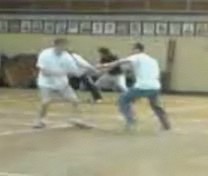
Those not exposed to internal force may not appreciate how powerful it is. A strike using internal force may appear gentle but can cause serious injury. Hence, control is important in combat training.
There are two main levels of control. Firstly, the exponent stops just an inch or two before target, known in kungfu terminology as “dim tou wei chi”, which means “just touch will do”. (In fact, the strike does not even touch.).
Secondly, the exponent does not apply force in contact. Chris and Ronny exercise good control. Ronny specializing in the Dragon Form makes effective use of body-movement in his attacks. Davies' control is more obvious, as he counter attacks Jonny while brushing away his low punch.
Inconspicuous but Deadly Kicks

It is a misconception to think that kicks are seldom or unimportant in kungfu. There is a kungfu saying as follows: “sau si leong moon seen, chuan pang keok ta yein”, which means that “the hands are like two swing-doors to open the way, it is mainly the kicks that decide the combat”.
It is also a misconception to think that the higher a person can kick, the better a martial artist he is. Kungfu kicks are rarely high, and are purposely inconspicuous. In this video clip, Chris from Shaolin Wahnam Scotland who specializes in the Monkey Set, demonstrates an excellent kick which can be fatal to the opponent in a real fight.
The Advantages of Using Proper Stances
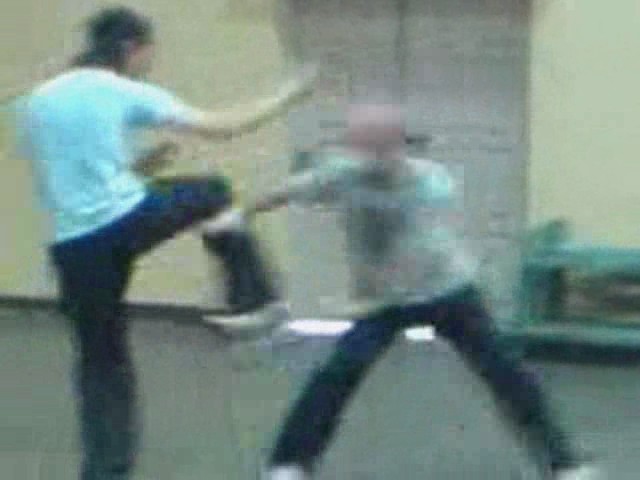
Most kungfu practitioners today cannot apply their kungfu technique for combat, and many mistakenly think stances are ineffective in a fight. This video clip shows Jonny who specializes in the Dragon Form, and Simon who specializes in Dragon-Tiger applying kungfu techniques and stances spontaneously and effectively. In fact, had they not used stances, it would be difficult to defend some of the attacks.
The attacks are of course performed in proper stances too, as doing so gives the practitioner many advantages. For example, instead of bouncing away from Jonny' “Precious Duck Swims Through Lotus”, Simon merely sinks his stance to deflect the attack, and immediately counter-attacks with “Dark Dragon Enters a Well”.
Power, Speed and Flexibility gained from Using Stances

Some of the advantages of using proper stances in combat are better power, speed and flexibility. The combatants are powerful even though they are graceful and relaxed because they use internal force. Without proper stances, the force generated will be minimized.
Contrary to what many uninitiated persons may think, using stances results in better speed and agility. For example, in the free sparring shown in the video clip, Sifu Markus of Finland could be hit twice by Jonny's skilful kicks, and Jonny could be hit by Sifu Markus palm strike had they not been effective in their stances and footwork.
In another combat, Sifu Tim and Hendrik could avoid each others' fast strikes because of their good stances enabling them to employ agile body-movement.
Kungfu Sparring is not only Beautiful but also Fast and Effective
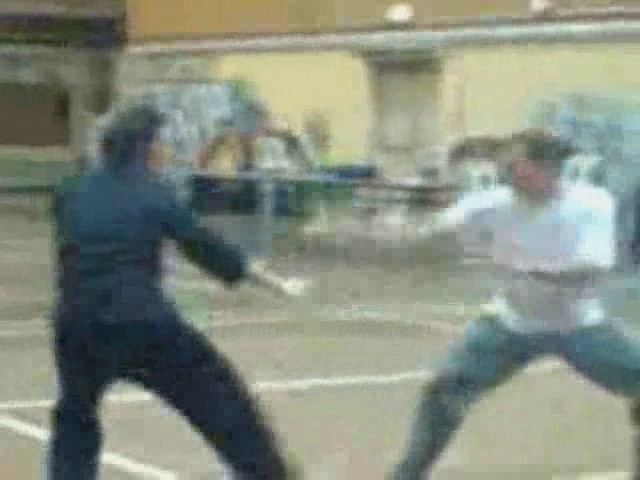
Some kungfu practitioners may start with kungfu patterns in free sparring, but soon throw them away to bounce about and punch like a Boxer. They find their kungfu patterns a liability in combat. They find bouncing about and punching like a Boxer more agile and faster. This is true, but the fact is not because kungfu is ineffective but because they have never been trained to use kungfu for combat. They only use kungfu forms for solo demonstration.
The free sparring between Jamie and Ronny in this video clip shows that using kungfu skills and techniques in combat can be very fast and agile too. More significantly, they are not tired or out of breath, despite having sparred for more than an hour when this video was taken and having performed other vigorous exercises continuous for a few hours.
Gripping with the Tiger Claw
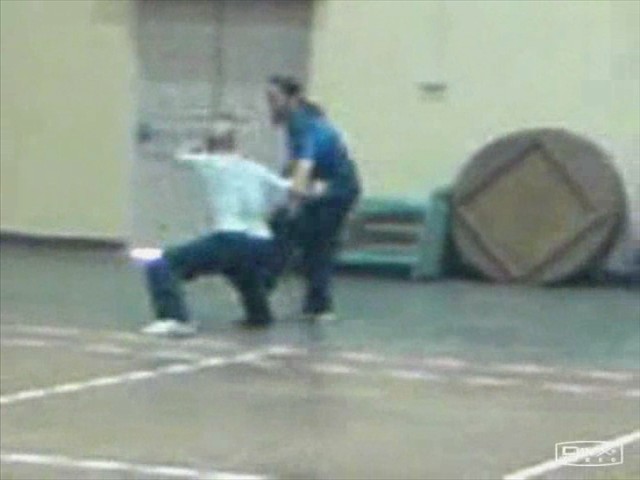
Kungfu is a complete art, whereas many other martial arts are incomplete and hence their practitioners have to cross-train. A Judo exponent and a Taekwondo exponent, for example, would have to borrow techniques outside their own arts to counter each other's attacks in a real fight because kicks and throws are not allowed in their arts respectively.
In kungfu, besides strikes and kicks, you may also attack with grips and throws. At the start of this video clip, Joshua grips Simon's arm and attempts to break his elbow, but Simon successfully releases the grip. At the end of the clip, Joshua grips Simon's elbow with a Tiger-Claw, and Simon is about to counter it.
LINKS
Lessons from the Special Shaolin Kungfu Course of September 2005
- Part 1 - Initiating and Responding to Attacks
- Part 2 - Secrets in Counters against Boxer's Attacks
- Part 3 - Process of Composing a Kungfu Set
- Part 4 - Combat Sequences from Specialized Sets
- Part 5 - Refining Combat Sequences of Specialized Sets
- Part 6 - Making Variations to Meet Changing Combat Situations
- Part 7 - Bringing out the Beauty of Shaolin Kungfu in Combat
- Part 8 - From Pattern-Sets to Sequence-Sets
- Part 9 — Sparring at the Haphazard, Technique and Sequence Levels
- Part 10 — Improving Techniques and Flow in Free Sparring
- Part 11 — Free Sparring using Kungfu Skills and Techniques
- Part 12 — The Flowing Water Staff and its Application
